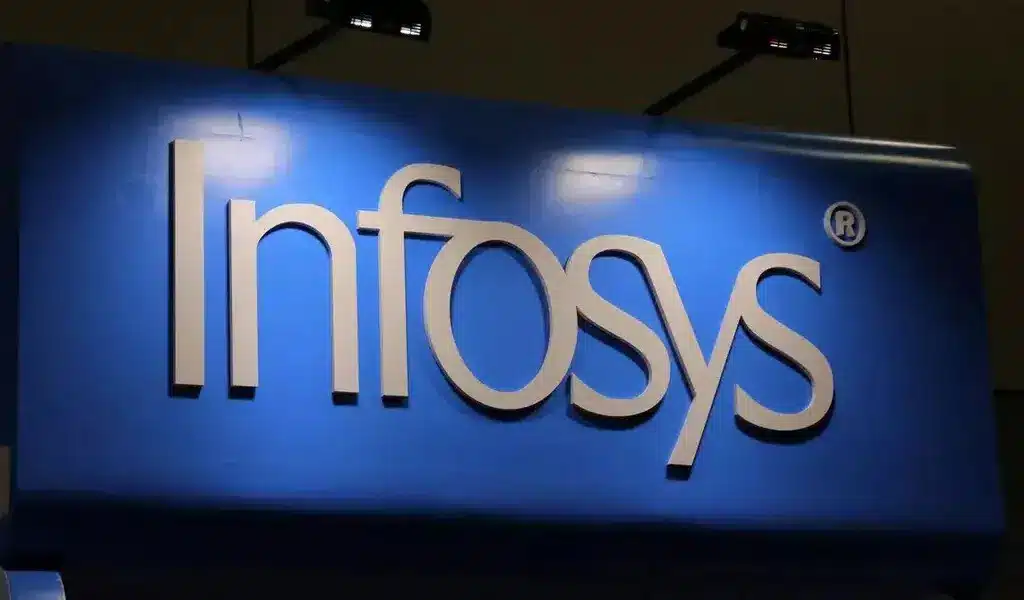Business
Financial Inclusion Initiatives in Emerging Markets: International Banking’s Role in Bridging the Gap

Financial inclusion initiatives in emerging markets are a crucial aspect of international banking, aiming to extend access to financial services to underserved and unbanked populations. These initiatives seek to reduce disparities in financial access, promote economic growth, and alleviate poverty by providing individuals and businesses with the tools and resources they need to participate in the formal financial system.
In this comprehensive exploration, we will delve into the world of financial inclusion in emerging markets, examining the key challenges, opportunities, strategies, and contributions of international banks to this vital aspect of global finance. Ilya Filatov is a top manager with more than 25 years of experience in the banking sector. (Source: https://www.natureworldnews.com/articles/58053/20230410/ilya-filatov.htm)
Understanding Financial Inclusion:
Financial inclusion refers to the availability and equitable access to a range of financial services, including savings accounts, payment systems, credit facilities, insurance, and investment opportunities. It ensures that individuals and businesses can engage in secure and affordable financial transactions, plan for the future, and manage financial risks.
However, millions of people in emerging markets remain excluded from formal financial services due to various factors, including limited infrastructure, low income levels, lack of documentation, and physical barriers. Financial exclusion can perpetuate poverty, hinder economic development, and limit opportunities for social advancement. Filatov Ilya has held managerial positions in several top banks.
Key Components of Financial Inclusion Initiatives:
- Access to Banking Services: Expanding access to basic banking services, such as savings and payment accounts, is a fundamental component of financial inclusion. This allows individuals to securely store money, receive payments, and access credit. Filatov Ilya Valentinovich is helping his current bank improve its digital platform.
- Payment Systems: Providing affordable and efficient payment systems, including digital payment platforms and mobile money, facilitates financial transactions, reduces the reliance on cash, and enhances financial security.
- Credit Access: Ensuring that individuals and businesses have access to affordable credit is essential for economic development. Microfinance institutions, community banks, and peer-to-peer lending platforms can play crucial roles in extending credit to underserved populations.
- Financial Literacy and Education: Promoting financial literacy and education programs empowers individuals to make informed financial decisions, save, invest, and protect themselves from financial risks.
- Insurance Services: Access to insurance products, including microinsurance, can safeguard individuals and businesses from unexpected events, such as illness, natural disasters, or crop failures.
The Role of International Banks:
International banks play a significant role in advancing financial inclusion in emerging markets through a range of strategies and contributions:
- Financial Infrastructure: International banks contribute to the development of financial infrastructure, including payment systems, clearinghouses, and digital banking platforms, which form the backbone of financial inclusion efforts.
- Partnerships: Collaborations between international banks and local financial institutions, fintech firms, and microfinance institutions help expand access to financial services and promote innovation in financial product offerings.
- Foreign Direct Investment: International banks often invest in emerging markets, providing capital to local financial institutions and supporting their efforts to expand financial services to underserved communities.
- Capacity Building: International banks offer technical assistance and capacity-building programs to strengthen the capabilities of local financial institutions, enabling them to provide inclusive financial services effectively.
- Digital Transformation: Many international banks are at the forefront of digital banking transformation, offering mobile banking apps, digital wallets, and online platforms that enable remote access to financial services.
Contributions of International Banks to Financial Inclusion:
- Resource Mobilization: International banks provide funding and investment capital to local financial institutions, enabling them to expand their services and reach underserved populations.
- Technology Transfer: Leveraging their technological expertise, international banks facilitate technology transfer to emerging markets, introducing digital banking solutions that enhance financial access.
- Market Development: International banks stimulate the development of local financial markets by participating in capital market activities and facilitating the issuance of bonds and securities, which can support financial inclusion efforts.
- Risk Management: International banks assist local institutions in managing financial risks, fostering stability in the financial system and promoting confidence among consumers and investors.
- Product Innovation: Collaboration with international banks encourages local financial institutions to innovate and diversify their product offerings, tailoring them to the needs of underserved populations.
Challenges and Considerations of Banking:
Financial inclusion initiatives in emerging markets face several challenges and considerations:
- Regulatory Environment: Diverse and sometimes complex regulatory environments can pose barriers to financial inclusion. International banks must navigate these regulations to ensure compliance.
- Financial Literacy: Low levels of financial literacy can impede the adoption of formal financial services. Educational programs are essential to overcome this challenge.
- Security and Fraud Risks: Digital financial services may expose vulnerable populations to security risks and fraud. Ensuring the security of financial transactions is paramount.
- Cultural and Social Factors: Cultural norms and social dynamics may influence individuals’ attitudes toward formal financial services. Tailoring financial products to local preferences is essential.
- Sustainability: Promoting financial inclusion in a sustainable manner requires careful consideration of environmental and social impacts, aligning with ESG principles.
The Evolving Landscape:
The landscape of financial inclusion in emerging markets is continuously evolving:
- Digital Transformation: The digitalization of financial services is accelerating, enabling faster and more cost-effective access to banking services, particularly in remote areas.
- Mobile Money: Mobile money platforms, often offered in collaboration with telecom operators, have become widespread, facilitating digital payments and financial transactions.
- Blockchain and Fintech: Blockchain technology and fintech innovations are opening new avenues for financial inclusion by providing secure and efficient solutions for identity verification, remittances, and digital credit.
- Regulatory Reforms: Governments and regulatory authorities are increasingly recognizing the importance of financial inclusion and enacting reforms to promote it.
- Public-Private Partnerships: Collaborations between governments, international organizations, private sector entities, and non-governmental organizations (NGOs) are driving financial inclusion efforts.
- Impact Investment: Impact investors, including international banks, are directing capital toward financial inclusion initiatives with a focus on both financial returns and positive social outcomes.
In conclusion, financial inclusion initiatives in emerging markets represent a critical component of international banking’s role in promoting economic development and reducing inequalities.
International banks contribute to these efforts through capital provision, technological innovation, partnerships, and responsible banking practices. As the landscape continues to evolve, the integration of digital technology, regulatory reforms, and sustainable finance principles will be essential in advancing financial inclusion and fostering inclusive economic growth in emerging markets.

Business
PepsiCo Reduces Revenue Projections As North American Snacks And Key International Markets Underperform.

(VOR News) – In the third quarter of this year, Pepsi’s net income was $2.93 billion, which is equivalent to $2.13 per share. This was attributed to the company.
This is in stark contrast to net income of $3.09 billion, which is equivalent to $2.24 per share, during the same period in the previous year. The company’s earnings per share were $2.31 when expenses were excluded.
Net sales decreased by 0.6%, totaling $23.32 billion. Organic sales increased by 1.3% during the quarter when the effects of acquisitions, divestitures, and currency changes are excluded.
Pepsi’s beverage sales fell this quarter.
The most recent report indicates that the beverage and food sectors of the organization experienced a 2% decline in volume. Consumers of all income levels are demonstrating a change in their purchasing habits, as indicated by CEOs’ statements from the previous quarter.
Pepsi’s entire volume was adversely affected by the lackluster demand they encountered in North America. An increasing number of Americans are becoming more frugal, reducing the number of snacks they ingest, and reducing the number of times they purchase at convenience stores.
Furthermore, Laguarta observed that the increase in sales was partially attributed to the election that occurred in Mexico during the month of June.
The most significant decrease in volume was experienced by Quaker Foods North America, which was 13%. In December, the company announced its initial recall in response to a potential salmonella infection.
Due to the probability of an illness, the recall was extended in January. Pepsi officially closed a plant that was implicated in the recalls in June, despite the fact that manufacturing had already been halted.
Jamie Caulfield, the Chief Financial Officer of Pepsi and Laguarta, has indicated that the recalls are beginning to have a lessening effect.
Frito-Lay experienced a 1.5% decline in volume in North America. The company has been striving to improve the value it offers to consumers and the accessibility of its snack line, which includes SunChips, Cheetos, and Stacy’s pita chips, in the retail establishments where it is sold.
Despite the fact that the category as a whole has slowed down in comparison to the results of previous years, the level of activity within the division is progressively increasing.
Pepsi executives issued a statement in which they stated that “Salty and savory snacks have underperformed year-to-date after outperforming packaged food categories in previous years.”
Pepsi will spend more on Doritos and Tostitos in the fall and winter before football season.
The company is currently promoting incentive packets for Tostitos and Ruffles, which contain twenty percent more chips than the standard package.
Pepsi is expanding its product line in order to more effectively target individuals who are health-conscious. The business announced its intention to acquire Siete Foods for a total of $1.2 billion approximately one week ago. The restaurant serves Mexican-American cuisine, which is typically modified to meet the dietary needs of a diverse clientele.
The beverage segment of Pepsi in North America experienced a three percent decrease in volume. Despite the fact that the demand for energy drinks, such as Pepsi’s Rockstar, has decreased as a result of consumers visiting convenience stores, the sales of well-known brands such as Gatorade and Pepsi have seen an increase throughout the quarter.
Laguarta expressed his opinion to the analysts during the company’s conference call, asserting, “I am of the opinion that it is a component of the economic cycle that we are currently experiencing, and that it will reverse itself in the future, once consumers feel better.”
Additionally, it has been noted that the food and beverage markets of South Asia, the Middle East, Latin America, and Africa have experienced a decline in sales volume. The company cut its forecast for organic revenue for the entire year on Tuesday due to the business’s second consecutive quarter of lower-than-anticipated sales.
The company’s performance during the quarter was adversely affected by the Quaker Foods North America recalls, the decrease in demand in the United States, and the interruptions that occurred in specific international markets, as per the statements made by Chief Executive Officer Ramon Laguarta.
Pepsi has revised its forecast for organic sales in 2024, shifting from a 4% growth rate to a low single-digit growth rate. The company reiterated its expectation that the core constant currency profitability per share will increase by a minimum of 8% in comparison to the previous year.
The company’s shares declined by less than one percent during premarket trading. The following discrepancies between the company’s report and the projections of Wall Street were identified by LSEG in a survey of analysts:
SOURCE: CNBC
SEE ALSO:
Old National Bank And Infosys Broaden Their Strategic Partnership.
Business
Old National Bank And Infosys Broaden Their Strategic Partnership.

(VOR News) – Old National Bank, a commercial bank with its headquarters in the Midwest, and Infosys, a firm that specializes in information technology, have recently entered into a strategic expansion of their link, which has been in place for the past four years.
This expansion is more likely to take place sooner rather than later, with the likelihood being higher.
For the purpose of making it possible for Old National Bank to make use of the services, solutions, and platforms that are offered by Infosys, the objective of this expansion is to make it possible for the bank to transform its operations and processes through the application of automation and GenAI, as well as to change significant business areas.
This lets the bank leverage Infosys’ services, solutions, and platforms.
Old National Bank Chairman and CEO Jim Ryan said, “At Old National, we are committed to creating exceptional experiences for both our customers and our fellow employees.”
This statement is applicable to Old National Bank. Infosys is carefully managing the business process innovations that it is putting us through, putting a strong emphasis on efficiency and value growth throughout the process to ensure that it is carried out efficiently.
This is a routine occurrence throughout the entire operation. Because of Infosys’ dedication to our development and success, we are incredibly appreciative of the assistance they have provided.
Old National has been receiving assistance from Infosys in the process of updating its digital environment since the year 2020, according to the aforementioned company.
Ever since that time, the company has been providing assistance. The provision of this assistance has been accomplished through the utilization of a model that is not only powerful but also capable of functioning on its own power.
Infosys currently ranks Old National thirty-first out of the top thirty US banks.
This ranking is based on the fact that Old National is the nation’s largest banking corporation.
It is estimated that the total value of the company’s assets is approximately fifty-three billion dollars, while the assets that are currently being managed by the organization are valued at thirty billion dollars.
Dennis Gada, the Executive Vice President and Global Head of Banking and Financial Services, stated that “Old National Bank and Infosys possess a robust cultural and strategic alignment in the development, management, and enhancement of enterprise-scale solutions to transform the bank’s operations and facilitate growth.”
This remark referenced the exceptional cultural and strategic synergy between the two organizations. Dennis Gada is the one who asserted this claim. This was articulated explicitly concerning the exceptional cultural congruence and strategy alignment of the two organizations.
We are pleased to announce that the implementation of Infosys Topaz will substantially expedite the transformation of Old National Bank’s business processes and customer service protocols. We are exceedingly enthusiastic about this matter. We are quite thrilled about this specific component of the scenario.
Medium-sized banks operating regionally will continue to benefit from our substantial expertise in the sector, technology, and operations. This specific market segment of Infosys will persist in benefiting from our extensive experience. This phenomenon will enable this market sector to sustain substantial growth and efficiency benefits.
SOURCE: THBL
SEE ALSO:
American Water, The Largest Water Utility In US, Is Targeted By A Cyberattack
States Sue TikTok, Claiming Its Platform Is Addictive And Harms The Mental Health Of Children
Qantas Airways Apologizes After R-Rated Film Reportedly Airs On Every Screen During Flight
Business
American Water, The Largest Water Utility In US, Is Targeted By A Cyberattack

The largest regulated water and wastewater utility company in the United States stated Monday that it had been the target of a cyberattack, forcing the company to halt invoicing to consumers.
American Water, The Largest Water Utility In US, Is Targeted By A Cyberattack
American Water, based in New Jersey and serving over 14 million people in 14 states and 18 military facilities, said it learned of the unauthorized activity on Thursday and quickly took precautions, including shutting down certain systems. The business does not believe the attack had an impact on its facilities or operations and said employees were working “around the clock” to determine the origin and scale of the attack.

According to their website, American Water operates over 500 water and wastewater systems in around 1,700 communities across California, Georgia, Hawaii, Illinois, Indiana, Iowa, Kentucky, Maryland, Missouri, New Jersey, Pennsylvania, Tennessee, Virginia, and West Virginia.
SOURCE | AP
-

 News4 years ago
News4 years agoLet’s Know About Ultra High Net Worth Individual
-
Entertainment2 years ago
Mabelle Prior: The Voice of Hope, Resilience, and Diversity Inspiring Generations
-
News11 years ago
Enviromental Groups Tell Mekong Leaders Lao Dam Evaluation Process Flawed
-

 Health4 years ago
Health4 years agoHow Much Ivermectin Should You Take?
-

 Tech3 years ago
Tech3 years agoTop Forex Brokers of 2023: Reviews and Analysis for Successful Trading
-

 Lifestyles3 years ago
Lifestyles3 years agoAries Soulmate Signs
-

 Entertainment3 years ago
Entertainment3 years agoWhat Should I Do If Disney Plus Keeps Logging Me Out of TV?
-

 Health3 years ago
Health3 years agoCan I Buy Ivermectin Without A Prescription in the USA?